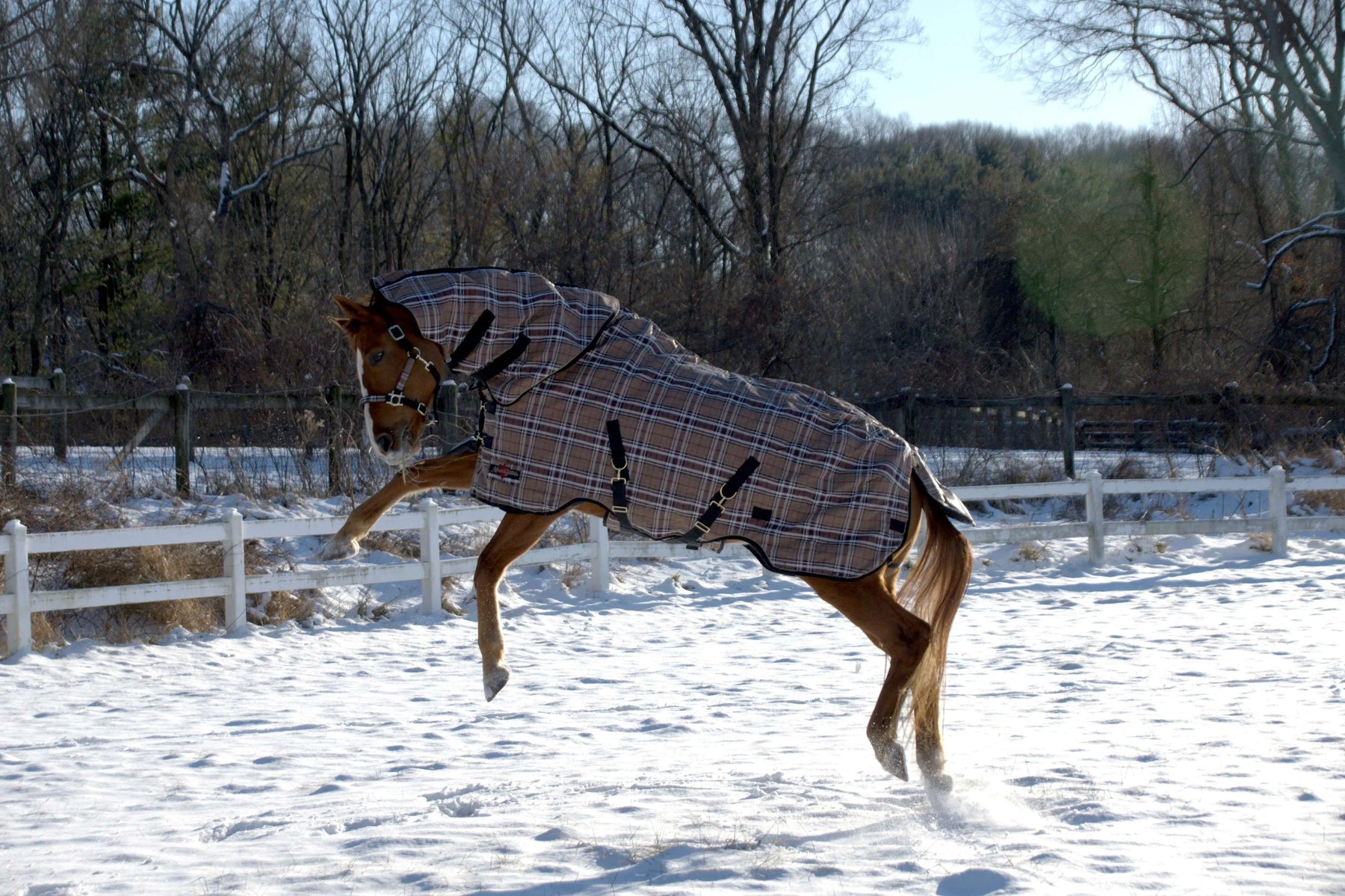
Winter to Spring Shedding & Proper Blanketing
As winter transitions into spring, horses go through the process of shedding their thick winter coats to make way for a lighter, sleeker summer coat.

Shedding is a sign that warmer weather is on its way, but it also means that horses will need proper care and attention during this transitional period. One important aspect of this care is proper blanketing.
The shedding process
Horses grow a thick winter coat to keep themselves warm during colder months. However, as the days get longer and temperatures start to rise, horses will naturally start shedding their winter coats. Shedding can begin as early as February or as late as May, depending on the climate and individual horse.
The process of shedding involves the hair follicles going through a growth cycle, where the old hairs are pushed out by new hairs. This can lead to large amounts of loose hair covering your horse's body, which can be a mess to deal with. Regular grooming and brushing can help remove the loose hair, making your horse more comfortable and promoting a healthy coat.
Proper blanketing
Proper blanketing is essential during the shedding process to help your horse regulate their body temperature and protect their skin. Here are some important tips to keep in mind:
1. Assess the horse's needs
Blanketing requirements vary depending on the age, health, living conditions, and hair coat condition of each horse. While some horses may require heavy winter blankets throughout the shedding process, others might be fine with just a lightweight sheet. Observe the behavior of your horse and monitor their body condition to determine the best blanketing approach.
2. Gradually adjust blanketing
As the temperatures increase, you should gradually adjust the layers of blankets your horse wears. Start by removing the heavy winter blanket and replacing it with a medium-weight one. If your horse is still warm, a lightweight might be sufficient. It's important not to overheat your horse by keeping them blanketed with heavy winter gear when the weather is milder.
3. Consider nighttime temperatures
While daytime temperatures might be warm enough to allow your horse to shed their winter coat, nighttime temperatures can still drop significantly. Make sure to monitor weather forecasts and dress your horse appropriately for both day and night. Layering blankets or using removable liners can provide flexibility in adjusting to varying temperatures.
4. Avoid overblanketing
Although you want to keep your horse comfortable, it's crucial not to overblanket them. Horses have a natural ability to regulate their body temperature, and excessive blanketing can disrupt this mechanism. Overheating can lead to sweating, which can make the horse uncomfortable and increase the risk of skin issues.
5. Regular care and maintenance
Remember to regularly check your horse's blankets for any tears or damage. Clean the blankets as needed to prevent dirt and sweat build-up, which can cause irritation and skin problems. Proper care and maintenance of blankets will ensure their effectiveness in providing comfort and protection during the shedding process.
Conclusion
As winter turns into spring, a horse's shedding process marks the arrival of warmer days. Proper blanketing plays a vital role in helping horses manage their body temperature and protecting their skin during this transition. By understanding your horse's needs, gradually adjusting blankets, and providing regular care and maintenance, you can ensure your horse is comfortable throughout the shedding process. Pay attention to your horse's behavior and body condition to make well-informed decisions about blanketing, and enjoy the beauty of their sleek, summer coat.
